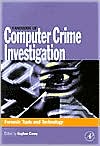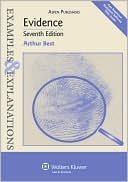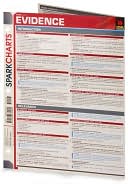Handbook of Computer Crime Investigation: Forensic Tools and Technology
Search in google:
Computers can be used in virtually any type of crime, ranging from cyberstalking and child pornography to financial fraud, espionage and terrorism. The Handbook of Computer crime investigation presents detailed technical information that can be used to help solve these crimes.Following on the success of his introductory text, Digital Evidence and Computer Crime, Eoghan Casey has brought together an expert panel of authors to create this detailed guide for professionals who are already familiar with digital evidence. This unique handbook explains how to locate an utilize evidence in computer hard drives, shared networks, wireless devices, or embedded systems. The use of currently available high-tech tools is discussed and real case examples are provided.To provide individuals with a deeper understanding of the forensic analysis of computer systems, three primary themes are treated:Tools: Software and hardware for collecting and analyzing digital evidence are presented and their strengths and limitations are discussed. The section provides details on leading hardware and software programs-such as EnCase, Dragon, and ForensiX-with each chapter written by that product's creator.Technology: This section provides the technical "how to" information for collecting and analyzing digital evidence in common situations, starting with computers, and Windows and Unix operating systems, progressing to network, wireless and embedded systems. Case examples: These actual situations demonstrate the technical, legal, and practical challenges that arise in real computer investigations.The Handbook of Computer Crime Investigation is an essential technical reference and on-the-job guide for professionals in computing, security and investigation, forensic science, legal and law enforcement communities. Booknews Detailed technical information is presented that can be used to help solve crime involving computers, for professionals who are already familiar with digital evidence. The handbook tells how to locate and use evidence in computer hard drives, shared networks, wireless devices, and embedded systems. Advantages and disadvantages of software and hardware for collecting and analyzing digital evidence are discussed, and instructions are given for collecting and analyzing digital evidence in common situations. Case examples demonstrate technical, legal, and practical challenges. Casey is a system security administrator for Yale University. Annotation c. Book News, Inc., Portland, OR (booknews.com)
About the AuthorsAcknowledgementsCh. 1Introduction1Ch. 2The Other Side of Civil Discovery17Ch. 3The Encase Process53Ch. 4Incident Response Tools73Ch. 5NFR Security93Ch. 6Tool Testing and Analytical Methodology115Ch. 7Forensic Analysis of Windows Systems133Ch. 8Unix System Analysis167Ch. 9Network Analysis201Ch. 10Wireless Network Analysis283Ch. 11Embedded Systems Analysis315Ch. 12Homicide and Child Pornography361Ch. 13Investigating Internet Gambling375Ch. 14Computer Intrusions395App. 1415App. 2419App. 3425App. 4433App. 5435Author Index437Subject Index439








